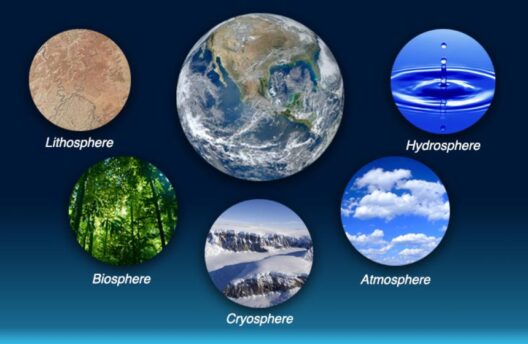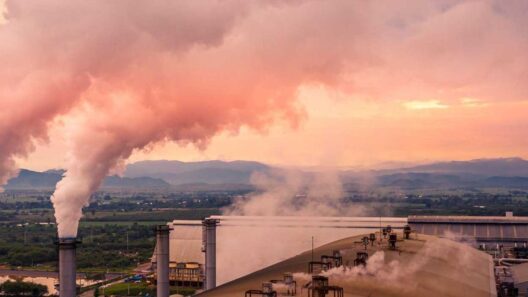As the world grapples with the undeniable urgency of climate change, comprehending the anthropogenic contributions to the greenhouse effect is paramount. This phenomenon encapsulates how human activity exacerbates the warming of our planet, primarily through the release of greenhouse gases (GHGs) such as carbon dioxide (CO2), methane (CH4), and nitrous oxide (N2O). Each of these gases plays a pivotal role in trapping heat within our atmosphere, creating a blanket that, while essential for life, has become perilously thickened by our collective actions. Aesthetic considerations aside, the stark reality of our contributions raises pressing questions about responsibility and the trajectory of our environment.
The preeminent driver of increased greenhouse gas emissions is fossil fuel combustion. From the moment the Industrial Revolution took root, humanity’s reliance on coal, oil, and natural gas has soared. Transportation—cars, trucks, planes—accounts for approximately 14% of global GHG emissions, primarily through fossil fuel combustion. Further compounding this issue, industrial processes and electricity generation contribute around 42% of CO2 emissions alone. The modernity we cherish has been built on the very resources that threaten our existence. As we revel in the conveniences of contemporary life, it is crucial to acknowledge the environmental costs these benefits incur.
However, it is not solely the transportation sector or industrial activities that inflate our carbon footprint. Our agricultural practices also play an indispensable role. Enter the realm of livestock production, which significantly contributes to methane emissions through enteric fermentation—a digestive process inherent to ruminants like cows and sheep. Surprisingly, a single cow can emit between 70 to 120 kilograms of methane annually, which is over 25 times more potent than carbon dioxide in terms of heat-trapping capability over a 100-year period. Additionally, land-use change for agriculture leads to deforestation, exacerbating the issue by diminishing the capacity of forests to absorb CO2.
It is essential to elucidate the impact of waste management on greenhouse gas concentrations. As organic waste decomposes in landfills, methane is released, adding further to the atmospheric burden. With over 2 billion tons of waste generated annually, and the majority of it winding up in landfills, the ramifications are severe. Innovative waste management practices such as composting and recycling are critical in mitigating these emissions. By rethinking how we dispose of our waste, we can reclaim some lost ground in the fight against the greenhouse effect.
Technological advancements hold the key to ameliorating our impact on climate change. Renewable energy sectors, including solar, wind, and hydroelectric power, offer promising alternatives to fossil fuel dependency. By investing in sustainable energy solutions, we can transition from a carbon-intensive economy to one that harnesses the infinite power of nature. These renewable sources not only reduce GHG emissions but also promise economic benefits through job creation in emerging green industries. As renewables grow, the aesthetic appeal of vast solar arrays and wind farms juxtaposed against natural landscapes becomes a symbol of hope for a sustainable future.
Equally significant is the role of policy frameworks in shaping our environmental legacy. International agreements, such as the Paris Agreement, serve as critical platforms for global cooperation. Nations come together, set targets, and commit to emission reductions, yet the reality of compliance often diverges from ambition. Emphasizing local action is equally vital. Communities must prioritize eco-friendly practices, from urban planning that incorporates green spaces to incentives for energy efficiency in homes. The aesthetic value of a thriving, lush urban environment cannot be overstated; it speaks to a future where human existence harmonizes with nature.
To effectuate meaningful change, fostering awareness within the populace is imperative. Educational initiatives can galvanize individuals toward reducing their carbon footprint through simple lifestyle adjustments. For example, minimizing meat consumption, embracing public transport, and practicing conscious consumerism are impactful steps. Just as aesthetic choices in architecture or landscaping can reflect sustainability, so too can personal choices promote a culture of environmental responsibility. The allure of a cleaner, greener world transcends mere aesthetic appeal—it is an essential aspect of our shared future.
In summary, recognizing the multifaceted ways humans contribute to the greenhouse effect compels us to take action. From fossil fuel reliance and agricultural practices to waste disposal and technology adoption, every aspect of modern life leaves an imprint on the environment. By tapping into sustainable energy sources, advocating for robust policy, and fostering community engagement, we can diminish our contributions to climate change. In understanding our role as stewards of the planet, we unearth the intrinsic beauty in nurturing a world that sustains both humanity and the exquisiteness of nature. The time to act is not tomorrow, but today, as we collectively endeavor to restore balance to our fragile ecosystem.







